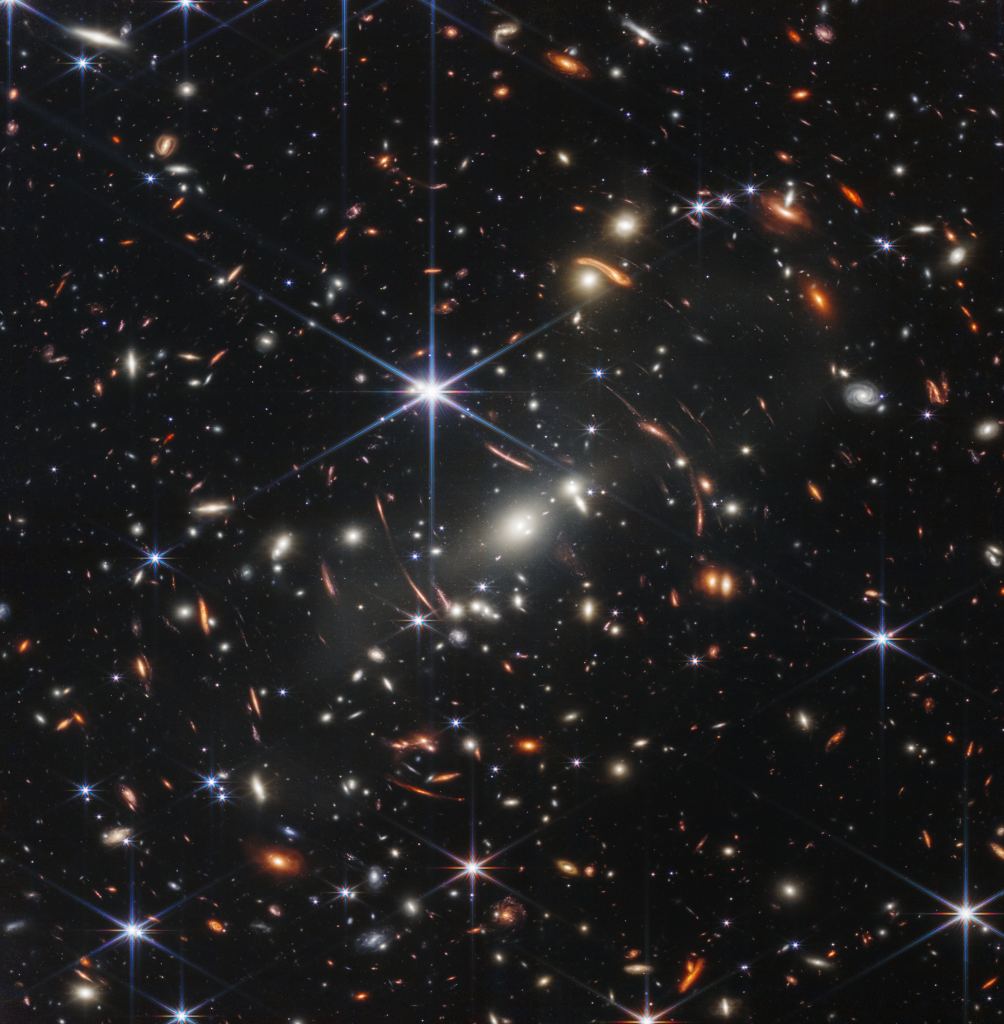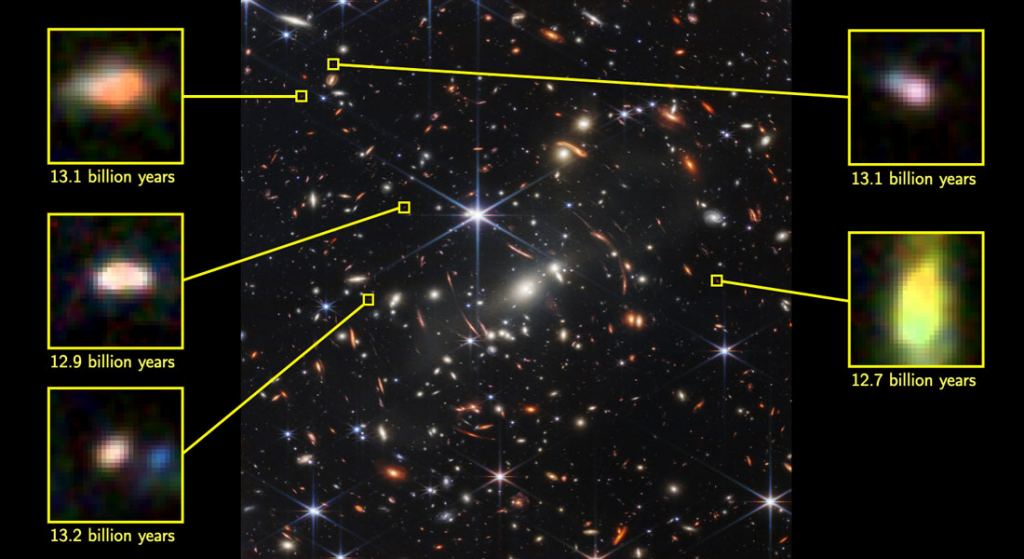When the James Webb Space Telescope provided astronomers with a glimpse of the earliest galaxies in the Universe, there was some understandable confusion. Given that these galaxies existed during " Cosmic Dawn," less than one billion years after the Big Bang, they seemed "impossibly large" for their age. According to the most widely accepted cosmological model—the Lambda Cold Dark Matter (LCDM) model—the first galaxies in the Universe did not have enough time to become so massive and should have been more modestly sized.
This presented astronomers with another "crisis in cosmology," suggesting that the predominant model about the origins and evolution of the Universe was wrong. However, according to a new study by an international team of astronomers, these galaxies are not so "impossibly large" after all, and what we saw may have been the result of an optical illusion. In short, the presence of black holes in some of these early galaxies made them appear much brighter and larger than they actually were. This is good news for astronomers and cosmologists who like the LCDM the way it is!
The study was led by Katherine Chworowsky, a graduate student at the University of Texas at Austin (UT) and a National Science Foundation (NSF) Fellow. She was joined by colleagues from UT's Cosmic Frontier Center, NSF's NOIRLab, the Dunlap Institute for Astronomy & Astrophysics, the Mitchell Institute for Fundamental Physics and Astronomy, the Cosmic Dawn Center (DAWN), the Niels Bohr Institute, the Netherlands Institute for Space Research (SRON), NASA's Goddard Space Flight Center, the European Space Agency (ESA), the Space Telescope Science Institute (STScI), and other prestigious universities and institutes. The paper that details their findings recently appeared in The Astrophysical Journal.
The data was acquired as part of the Cosmic Evolution Early Release Science (CEERS) Survey, led by Steven Finkelstein, a professor of astronomy at UT and a study co-author. In a previous study, Avishai Dekel and his colleagues at the Racah Institute of Physics at the Hebrew University of Jerusalem (HUJI) argued that the prevalence of low-density dust clouds in the early Universe allowed for rapid star formation in galaxies. Dekel and Zhaozhou Li (a Marie Sklodowska-Curie Fellow at HUJI) were also co-authors of this latest study.
As Chworowsky and her colleagues explained, the observed galaxies only appeared massive because their central black holes were rapidly consuming gas. This process causes friction, causing the gas to emit heat and light, creating the illusion of there being many more stars and throwing off official mass estimates. These galaxies appeared as " little red dots " in the Webb image (shown below). When removed from the analysis, the remaining galaxies were consistgent with what the standard LCDM model predicts.
"So, the bottom line is there is no crisis in terms of the standard model of cosmology," Finkelstein said in a UT News release. "Any time you have a theory that has stood the test of time for so long, you have to have overwhelming evidence to really throw it out. And that's simply not the case."
However, there is still the matter of the number of galaxies in the Webb data, which are twice as many as the standard model predicts. A possible explanation is that stars formed more rapidly in the early Universe. Essentially, stars are formed from clouds of dust and gas (nebulae) that cool and condense to the point where they undergo gravitational collapse, triggering nuclear fusion. As the star's interior heats up, it generates outward pressure that counteracts gravity, preventing further collapse. The balance of these opposing forces makes star formation relatively slow in our region of the cosmos.
According to some theories, the Universe was much denser than it is today, which prevented stars from blowing out gas during formation, thus making the process more rapid. These findings echo what Dekel and his colleagues argued in their previous paper, though it would account for there being more galaxies rather than several massive ones. Similarly, the CEERS team and other research groups have obtained spectra from these black holes that indicate the presence of fast-moving hydrogen gas, which could mean that they have accretion disks.
The swirling of these disks could provide some of the luminosity previously mistaken for stars. In any case, further observations of these "little red dots" are pending, which should help resolve any remaining questions about how massive these galaxies are and whether or not star formation was more rapid during the early Universe. So, while this study has shown that the LCDM model of cosmology is safe for now, its findings raise new questions about the formation process of stars and galaxies in the early Universe.
"And so, there is still that sense of intrigue," said Chworowsky. "Not everything is fully understood. That's what makes doing this kind of science fun, because it'd be a terribly boring field if one paper figured everything out, or there were no more questions to answer."
Further Reading: UT News*, The Astronomical Journal*
 Universe Today
Universe Today


